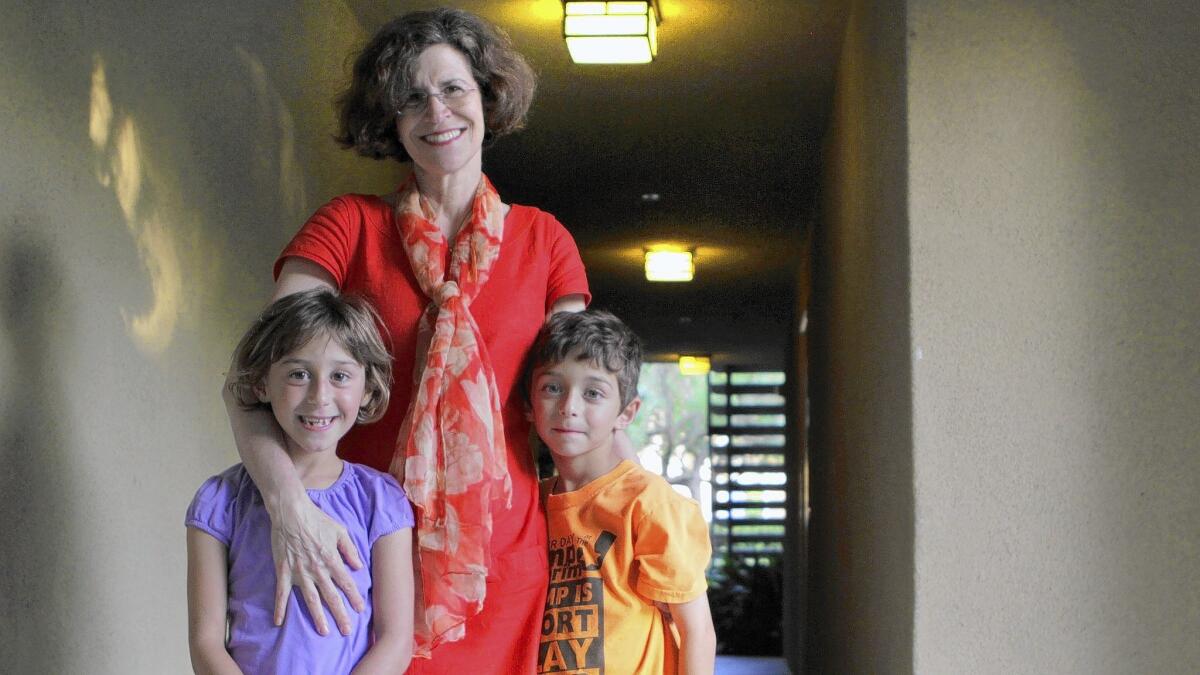A little-known worker benefit: Employee assistance programs

- Share via
Wendy Wolfson’s 7-year-old son picked a bad day to get sent home from first grade.
It was her first day at a new job, and she was in the middle of an employee orientation when she heard the news.
“I got a call from the school” saying to pick him up, recalls the 54-year-old science writer from Irvine. With no backup child care yet for her twins, she says, “I was wondering if I had to quit — right then.”
As luck would have it, the training Wolfson was attending at work included an explanation of a little-understood and little-used employee benefit that provided help.
Called employee assistance programs and offered by many employers, these provide confidential referral services of all kinds. They include a range of personal services for workers and their families in need of help.
Typically, these programs help workers deal with stress, smoking, drug abuse, financial issues and family needs such as elder care, day care and legal services.
Luckily for Wolfson, one of those services available to her was assistance finding child care. “Literally as soon as orientation ended and the room cleared,” she says, she asked for help.
Although these services are available at almost all big companies and many smaller ones, they are often little known and rarely discussed at the water cooler.
A major concern for employees is confidentiality. After all, workers may not want to share their problems with their bosses or co-workers, and, as a result, may choose not to seek this help. Many people fear that such information in the wrong hands could hurt their chances for a raise or a promotion — or could even affect job security.
The “primary tenet of this benefit is the fact that it is a confidential program,” says Marina London, spokeswoman for Arlington, Va.-based Employee Assistance Professionals Assn., a membership organization for employee assistance professionals.
Employers may request reports from the people who run these programs to demonstrate how much the service is being used and for what purpose, she said. But they can get only aggregate information — nothing that identifies the individuals who use the services.
Despite their widespread availability, just 4% to 6% of people with access to the programs use them. That’s mostly because employees don’t know what the programs offer and those who do often associate stigma with their use, says Rich Paul, a senior vice president at ValueOptions, a behavioral healthcare company.
“Often employees have a perception that it’s where you go if you’ve done something wrong like tested positive for a drug screen or were sent by a supervisor,” he says.
Yet in recent years, the services offered through these programs have greatly expanded. And there’s evidence to suggest that they do a lot of good.
For example, research conducted by ValueOptions found that the programs can reduce absenteeism from work 52% among those who access services, and increase employee well-being. Employers save money as a result, experts say.
Help generally is available 24 hours a day, seven days a week, year-round. The programs are staffed by licensed professionals with a minimum of a masters-level education in psychology or social work, as well as psychiatrists.
“You can call at 4 a.m. on Christmas Day and you’ll get connected,” London says.
Generally, the benefit extends to family members covered by your health insurance benefits. Some programs even cover household members such as an elderly mother.
Mental health and substance abuse counseling. The primary focus of these programs is to provide assessment of your personal circumstances, deliver short-term counseling and then refer you to outside resources, if necessary. There is help for marital troubles, divorce issues, family problems, depression, work stress and substance abuse.
Counselors are also called upon to help people in crises, such as violence that takes place at work, or if an area fire destroys employees’ homes.
You may have access to as few as three free sessions or as many as 12 sessions by phone and/or in person, depending on your company’s benefits. Once you’ve used up your free sessions, you will be referred for more treatment to a therapist or treatment facility in your community, if necessary.
Child-care resources. Like Wolfson, many people need a day-care backup plan for when their kids are sick or not in school for other reasons.
Child-care referrals are a popular feature, says Laura Baker of the consulting firm Mercer. You can be connected with nannies, child-care centers and summer camps. The services can also provide information about schools and colleges.
Elder care assistance. Another commonly used service is referral to resources and services for older adults in need of assistance caring for themselves. Counselors can help you find in-home caregivers, help you navigate Medicare and Medicaid services, and provide support for you while dealing with the emotional and other stressors associated with being a caregiver.
It’s also a good place to turn for information about the best assisted-living and nursing homes in your area, London says. These services are supposed to vet the resources they provide, and often will make calls on your behalf to help narrow your field of choices.
Financial counseling. According to Paul, during the recent financial crisis — between 2007 and 2010 — his firm saw a 200% increase in requests for help with financial issues.
The programs “will not provide strategic advice financially around investment but will provide education to help increase financial literacy. If you need help putting together a family budget, dealing with credit problems, the threat of foreclosure or bankruptcy, these programs can help as well.”
“Usually it’s providing links to attorneys who can help them understand and navigate their rights,” Paul says.
Wolfson, the science writer, was grateful to get quick help from her company’s program. “The problem is you’re pressed for time and you don’t know where to go,” she says. “It was a resource and another set of options.”
Zamosky is the author of “Healthcare, Insurance, and You: The Savvy Consumer’s Guide.”
More to Read
Inside the business of entertainment
The Wide Shot brings you news, analysis and insights on everything from streaming wars to production — and what it all means for the future.
You may occasionally receive promotional content from the Los Angeles Times.










